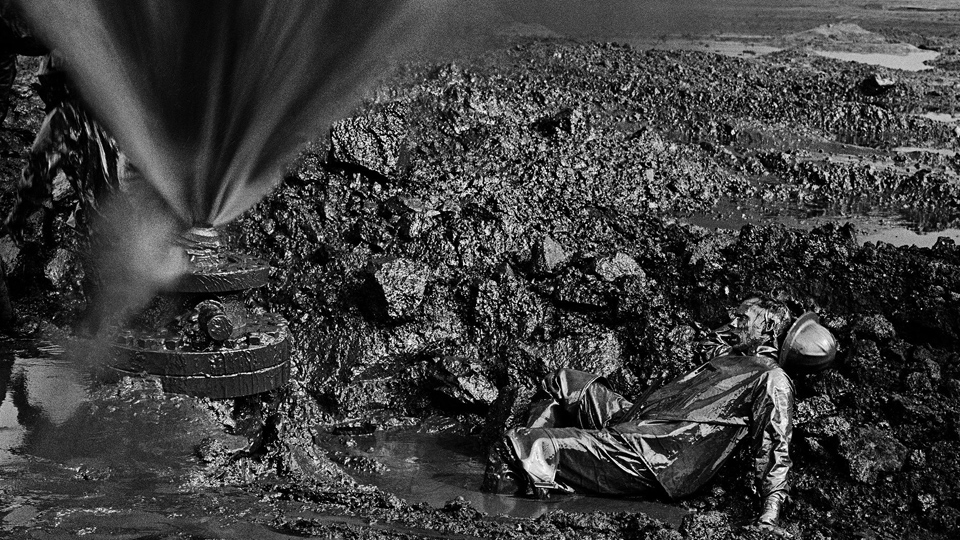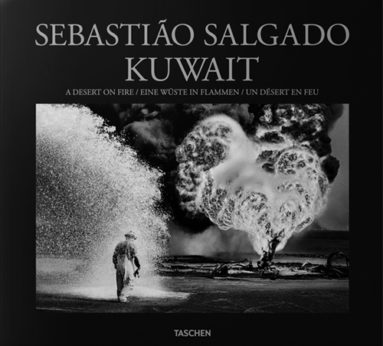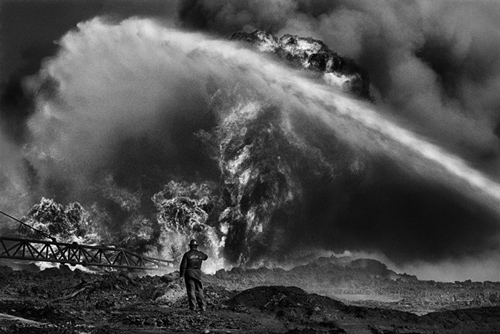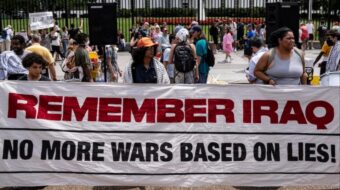
In April 1991, photographer Sebastião Salgado was commissioned by the New York Times to go to Kuwait and document the hundreds of oil wells set alight by Saddam Hussein’s army as it retreated back over the Iraqi border. Crossing into the country from Saudi Arabia in a rented 4×4, Salgado says that he simply drove towards “the densest clouds of black smoke.”

Some of the results of that mission can be seen in Kuwait: A Desert on Fire, a collection of 83 hauntingly beautiful black-and-white photographs taken at some risk to Salgado himself – conditions were so extreme that his smallest camera lens warped. They center on “the few hundred fearless men from a handful of nations who brought courage and talent and risked lives and limbs to halt one of the worst environmental catastrophes in recent memory.”
Salgado says that his images have “a timeless quality to them” and his work more than proves him right. Shooting in black-and-white tends to give any photograph a veneer of history but Salgado is a master of his craft and there’s much more to his shots than that.
In many of the pictures the men – garbed in helmets, boots, and overalls – are covered head to foot in oil, mud, or both as they struggle to stay on their feet. Their exhausted and dejected expressions as they try to stem the flow from broken pipes evokes images of the men and boys mercilessly sent to their deaths in the trenches of the first world war.
Danger abounds in these images. In one, a man walks past an apocalyptical 40-foot fire reminiscent of the Hiroshima mushroom cloud and there was a risk, Salgado says, that the metal tools that they were using on the metal wellheads could produce a spark that would relight the fires.

His photographs are at their most effective when they capture the concentration in the eyes of the men as they go about their dangerous work. In one, he captures the wry smile of one of the workers as he picks himself up after falling on his behind. It’s images like these which sublimely portray the camaraderie that exists between truly heroic workers.
In his renowned collection of essays, The Gulf War Did Not Take Place, philosopher and cultural theorist Jean Baudrillard points out that the Gulf War was misnamed. It was an atrocity masquerading as a war and the only media coverage we actually saw was a stylized and selective misrepresentation of what a conflict actually looks like.
Twenty-five years later, it’s a welcome surprise to see such poignant photographs of the environmental tragedy caused by the first Gulf War at all.
Sebastião Salgado
Taschen, $59.99
Hardcover, 208 pages









